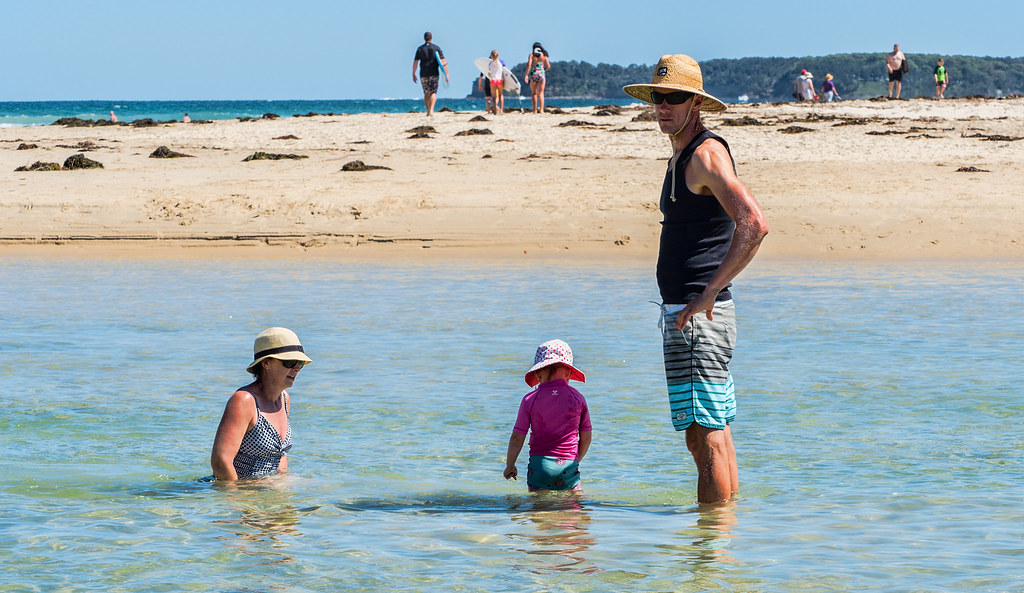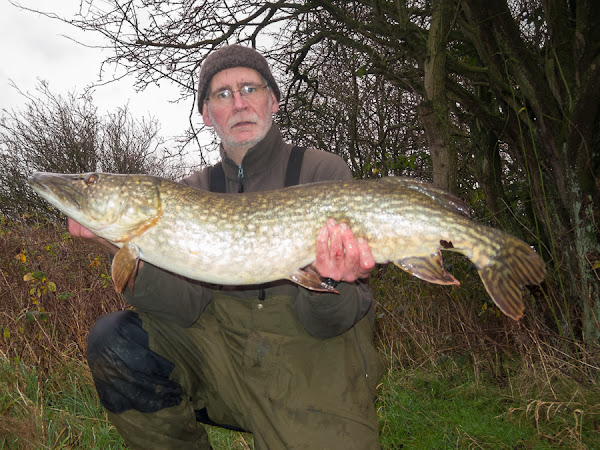Mike
I can't really make out from your long posting if you use your meter Quote " I have a 1970's, War Era, Russian 'Leningrad' Selenium Cell light meter..... its a fantastic device "unquote, or what you say further on again quote " So I looked at the sky, I looked at the scene I used my EYE! And a little know-how!" unquote.
For me, 'digital' is all about convenience. I shoot AUTO!!!!!!! for the most part! If i wanted to 'faff' I'd pick up one of the film cameras!!!!!.. but even then, I probably wouldn't 'faff' half as much as that chap on the river-bank in your american tutorial!!! I did have a look... but sorry... chap may have some worth-while suggestions to offer, but GAWD he's a gadget-freak, and what wisdom there seemed to be in there was lost in a welter of aps, and function buttons, and magic boxes!!!
Getting his 'phone out to estimate depth of focus? spending ten minutes to program his light meter to calculate two-stops 'compensation' for a polarizing filter?!?! cant he divide by four?!
And he 'sort' of said pretty much the same as I did, though, SOMEWHERE in among all the faffing about how to program ISO2 functions?!?!?!
> You need to know the effect of shutter speed and aperture and LOOK at your scene and work out what you want to do < Only he seemed to spend more time looking at 'gadgets' & playing with them, before he got round to it!
That shot of granddaughter in the garden by f16-sunny, with the electric-picture maker was unusual for me. I would, more often than not, have had the kit 18-55 on the front, and been on green-box 'full-auto' for such 'grabs'. For that shot, I 'may' have clicked over to aperture-priority to get a bit of selective focus. Otherwise, it was only because when I 'grabbed' the camera, it still had the 135mm M42 screw lens on it from my daughter doing a school assignment, and the camera wont even meter with manual lens, I had the choice.. use it 'as is' and go by eye, or rush off to try and find alternative lens or light-meter, and hope granddaughter didn't run off in the mean-time.... I went for option 'A'.. 'cos I could! And worked pretty well, I reckon! I got the shot, that's for sure.
As to the meter question; I actually have a couple of hand-held meters. I do use them... but seldom & circumstance dependent, and usually only if I am shooting one of the old film cameras that doesn't have an inbuilt meter, when I'll use one to take an 'incident' reading just to 'confidence check' against my 'estimate' by f16-sunny. May then get used for a reflected reading, for a specific subject, again, as a confidence check / comparison, if the subject is particularly bright or dark... because film is expensive, and I wont know if I have cocked it up until I have developed the film!
From my understanding a camera does not look at colours as such but what shades of grey it sees (so many talk about using a grey card which must mean something) and takes a mean average to produce and average colour. A light meter reads the actual amount of light instead and therefore a more accurate reading.
There you go again, abscessing about this 'accuracy'!!!! Why?!
ACCURACY - how close something is to a target. First of all, this implies that there IS a target. Second that the object is to get as close to it as possible.
If we were making pistons to fit in a car engine, and the 'target' was to make them 75mm in diameter, then accuracy is all important. Make them too big, they wont fit in the engine. Make them too small, then they wont 'seal' and when the petrol goes bang, the pressure will disappear down the gaps rather than push the piston down and make the wheels go round. So, closer we get to the desired outcome the better.
But we aren't making pistons! We are making pictures. And the desired out-come ISN'T to make a scientifically calculated 'perfect' exposure.. its to make a 'pleasing' picture!
How bright or dim the picture is, the tonal range, any blown high-lights or lost shadows are mere elements within that, that may or may not contribute or detract from how pleasing the final image is....
So there IS no 'target' no 'perfect' exposure to aim for... so if you don't have a 'target' how the heck can you measure 'accuracy'?
Image is judged, ultimately on its merit... whether it is 'pleasing'... NOT whether the exposure is scientifically centered on a theoretically 'perfect' tonal range, most scenes wont even have!!!!
Colours and Grey-Cards and measuring 'the actual amount of light'?!?! Do you know the difference between an incident reading and a reflected reading?
What chap was doing in the first part of your US How2, was using an incident meter, to measure ambient light levels falling on the scene.
This is no more 'accurate' than taking a reflected light reading, or letting your camera make one 'through the lens'! and both are measuring 'actual' light.. there's nothing else for them to measure!
A 'reflected' light meter reading, measuring the 'actual amount of light' going into the camera, rather than how much is falling out the sky. By your suggested ranking of 'actual light', then this would seem to be the more 'accurate'; its measuring the 'actual' light that is making your 'exposure'....with an incident reading, you are not measuring 'directly' how much light is making your picture in the camera, you are measuring how much light is available to make one outside it!
Its a bit like trying to work out how many people are in the shop by how many cars are in the car-park, rather than going in the shop and counting the 'actual' shoppers.. number of cars in the car-park is probably 'reasonably' proportional to the number of people in the shop, and easier to count, than folk moving around up and down the isles... give or take a little, you might, more often get closer to the answer counting cars and multiplying by 1.4 or something, than trying to count heads, and counting one or two twice and missing the odd one ducked under the vegetable counter or hiding in the freezers.
But its two alternative means of doing the same thing, and neither is any more or less 'accurate' than the other, only more or less appropriate.
Used the analogy of a white rabbit in a snow covered field, vs a black cat on a coal pile. Under the same 'ambient' light, if you took an incident meter reading, that suggested, say, ISO100, f5.6 @ 1/125th... the picture of your white rabbit in the snow would come out nice and bright, the whitet subject would be reflecting a lot more of that ambient light into the camera, than using those same settings to take a photo of the black cat on the coal-pile, which would be a bit dark, the subject not reflecting as much of that light into the camera.
Now, if you used a 'reflected' meter reading, it would likely suggest something a couple of stops less for the white rabbit in the snow, because its measuring how much light is being reflected off the bunny, not how much is falling on it, so maybe ISO100, and f16 @ 1/125th, and your snow would come out a little 'grey', and you would probably get a little more detail in the fur. Meanwhile, for your black cat on the coal-pile, again, meter measuring the light being reflected off the subject not what is falling on it, would probably suggest something a couple of stops more, maybe ISO100, f4 @ 1/60th, and your coal would be a little less black, and again, you'd probably get a little more detail in the cats fur.
Both methods very accurately measure the light levels.. and suggest very different exposure settings... the settings are no more or less 'accurate'.. they are merely more or less 'appropriate'... and neither method is 'right' or 'wrong' and neither are the results.. they are merely more or less 'pleasing' or closer or further from what you hoped to achieve.
Maybe I have misunderstood what the tuts on youtube from experts on photographic lighting on flash-ambient-tunnel -studio or whatever, but to me what they say makes sense.
Glad they make sense to you! Of what I watched of the tutorial you posted, I spotted one of two very pertinent and useful pieces of advice, utterly LOST in a sea of techno-gabble!
All I know is the light meter I got appears to give a better reading for ambient light than my Nikon D800 and Nikon D300 in program mode.
Ah! 'better readings'... explain.. how are the 'readings' better?
A reading is a reading. If I put a ruler against a block of wood and its 4" its four inches! Is it any 'better' if its in cm? 10cm, that's a MUCH 'better' reading, isn't it?
Maybe I should use my fancy vernier calipers (used to measure them pistons I mentioned earlier!) It's SOOOO much more accurate! Its calibrated down to 100ths of a mm! now my block of wood measures 101.59mm, is that 'better'? is that any more 'accurate'.. higher resolution, perhaps, but whether its any 'better'? REALLY depends on the question.. WHY do I want to know how thick it is!
Do you see the point about 'accuracy' and 'appropriateness' here?
May I guess what you mean is, that the hand-held meter suggests 'camera settings' that result in pictures YOU find more 'pleasing'?
This does NOT mean that the cameras inbuilt meter is 'wrong' or 'no good' or that the hand-held meter is 'right' or 'better' or 'more accurate'
What it means is that the hand-held meter is suggesting
different camera settings.... no more, no less.
'for some reason' the two meters don't agree... old proverb for you.. man with watch always knows time... man with two watches, never sure! Which watch do you trust? and why do you want to know the time to start with?
So, IF you knew how the two different meters were working out what settings to suggest to you, and why they were offering different ones..... then you might have that bit of know-how, to better exploit either meter, to be advised by them both, and slave to neither.
I prefer to use manual settings
Maybe so, but, swapping the camera's inbuilt meter for a hand held one, and slavishly following the suggestions that offers rather than slavishly following the ones the inbuilt meter offers, you have merely swapped masters.. you aren't exploiting ANY of the kit you have bought to get better pictures.. you are simply hoping the kit you have bought will do it for you.. and luckily, it seems, at the moment it is.. whether its the 'best' way or even the most 'appropriate' way, the easiest way, or the cheapest way, or the fastest way... well,, more and more questions, to which there is no unequivocal right or wrong answer.
 Uploaded for a thread by Richard Taylor, on Flickr
Uploaded for a thread by Richard Taylor, on Flickr For our in-laws by Richard Taylor, on Flickr
For our in-laws by Richard Taylor, on Flickr


